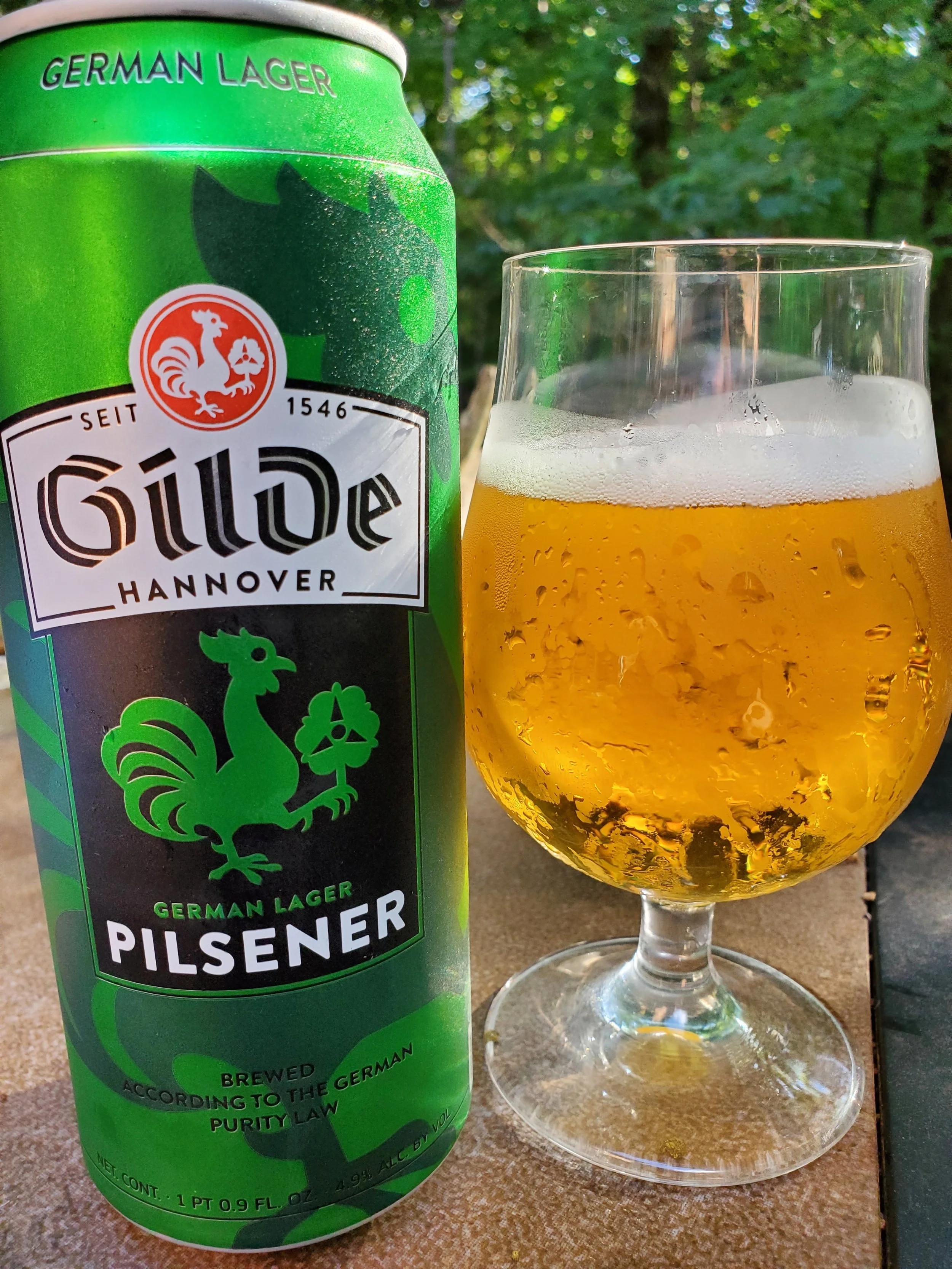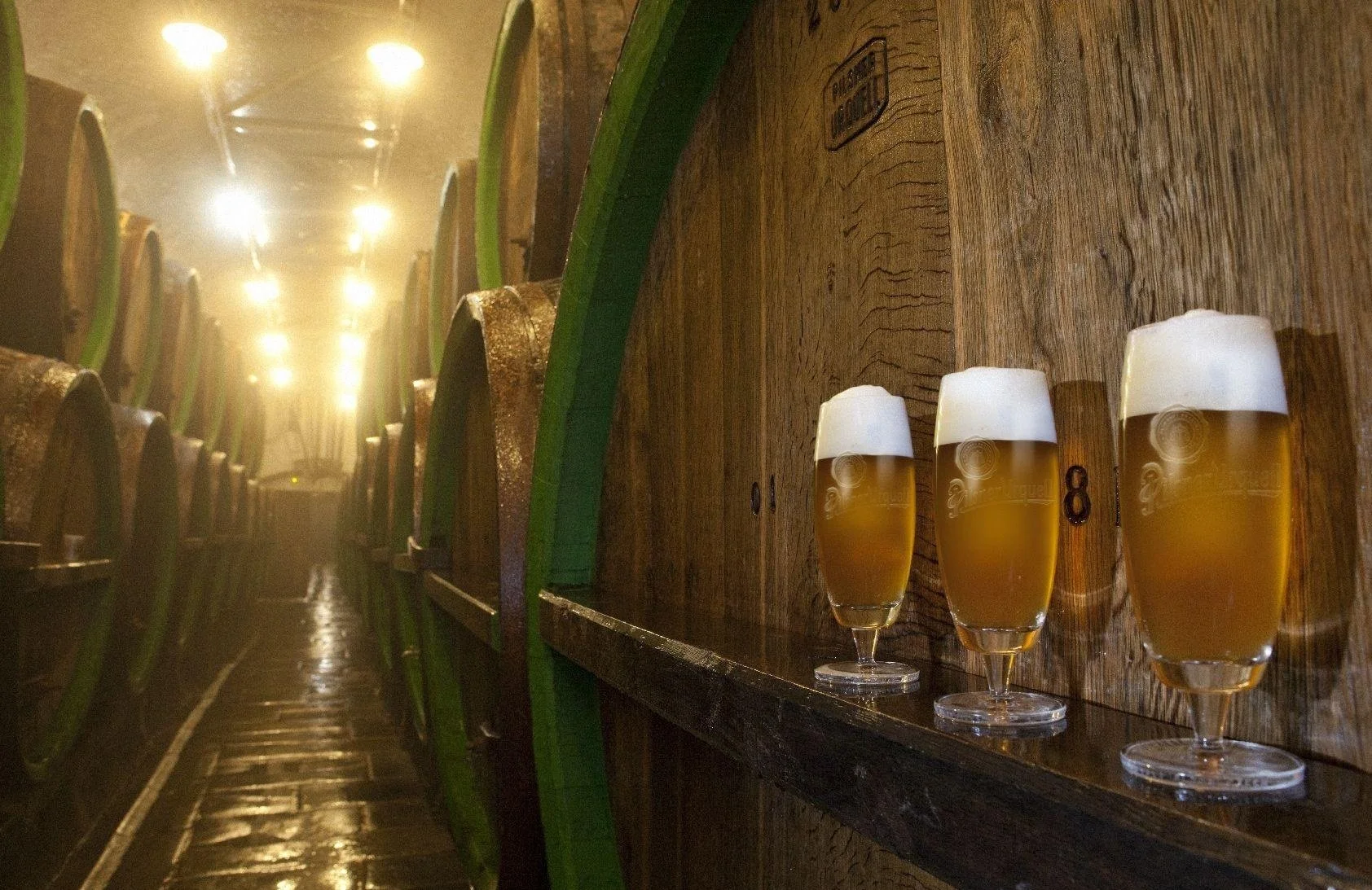Poppin’ Pils
Pilsner - that crisp, bright, sudsy, and oh so refreshing favorite. Not too bitter, not too malty, not too heavy, just right. So familiar but still always alluring. Worthy of slowly sipping or, if the situation calls for it, absolutely crushing.
Truly a beer-flavored beer… there isn’t a style that better captures the raw essence of what makes a beer taste like a beer. At least, that’s probably most of the beer drinkers around the world today would say. Dockworkers in 18th Century London who drank nothing but brown-coloured pub ales would probably disagree - you might be surprised to know that, before the advent of Pilsner in the 1800s, the world brewed and drank ales almost exclusively.
So, what makes a Pilsner a Pilsner? Where does the style come from, and what different types of Pilsner are there?
Gilde Pilsener German-style pilsner (with their only location outside of Germany located in Southend, Charlotte)
Pilsner was the first type of pale-colored lager to be widely disseminated throughout the beer-drinking world. A lager is a beer made using bottom fermenting yeast i.e. fermentation occurs at the bottom of the vessel. This is typically done at colder temperatures than are ales, which are made using top-fermenting yeast. Then, lagers are aged, or conditioned (Lager is the German word for storage) for several weeks or even months. This aging allows the yeast and proteins suspended in the beer to precipitate to the bottom of the vessel, sort-of a natural filtration, resulting in the crystal clarity and clean, smooth, crispness for which Pilsners (and lagers more broadly) became famous. The beer is then moderately hopped for additional bite, crispness, and longevity (hops are a natural anti-bacterial preservative).
Pilsner Urquell
This takes us to Pilsen, Bohemia, 1842 - a largely German-speaking region of what is now the Czech Republic, but was then part of the Austrian Habsburg Empire. The citizen-owed brewery called Burger-Brauerei Pilsen, now known as Pilsner Urquell, had been experimenting with cool-fermenting lager yeast while also discovering that aging these beers in cold, dark caves increased both the physical clarity and shelf-life of the beers, which was very attractive from a business and quality perspective. The unusually soft water in Pilsen, in addition to the use of lighter malts and spicy, local Saaz hops also gave an especially clean, light, bright and crisp quality to the beer. By 1842, the brewery had begun full production of this new, unique style, and it exploded in popularity. In just 10 years, from 1860 to 1870, lagers went from representing just a third of all beer produced in Bohemia, to 98%.
The invention of modern refrigeration in the late 1800s eliminated the need for cool, dark caves for lagering, making it possible to brew lagers almost anywhere in the world. Breweries all over Czechia, Germany and the rest of Central Europe began copying and producing the style en masse. Each region developed its own nuances for the style, based on the local water mineral content, the grain used, how much the grain is roasted (if at all), the choice of hops and yeast, fermentation temperature, lagering time, etc.
By the turn of the 19th Century, pale lagers were here, and here to stay. The easy-drinking quality of Pilsners ensured that the style appealed the the largest possible contingent of the beer-swilling population. That, the superior shelf-life, and the resulting ability to ship it over much greater distances compared to ales, allowed Pilsner to be come the world’s most popular style, which it remains to this day.
Carolina Beer Temple Kellerpils (Unfiltered Pilsner)
So, Pilsner is originally a Czech-style beer… what are some of the other major styles of Pilsner Beer?
German Style Pilsners seem a good place to start, because that’s where the style spread to immediately following its Czech inception. Because they are usually made with German Noble hops and don’t necessarily include any Saaz, German Pilsners are typically more hop-forward and more bitter than the less hop-assertive Czech styles, which get more of a floral spiciness from the local Saaz hops. The malt character of a German Pils may also be slightly sweeter and lighter-bodied than the biscuit-y, cracker-y profile of a Czech Pils.
Kellerpils, or Kellerbier, which originated isn’t the Franconia region of south-central Germany is essentially a Pilsner that’s simply unfiltered and, therefore, naturally cloudy from the yeast, though not like a Hefeweizen or New England Style IPA.
Zwickelbier is the weaker (ABV), lighter cousin of the Kellerbier.
Lenny Boy Brewing Spaghetti Handshake Italian Pilsner
Italian Pilsner - My personal favorite style of Pilsner. A style attributed to brewers Agostino Arioli at Birificio Italiano in Italy and Matt Brynildson at Firestone Walker, this take on Pilsner is defined by its use of dry hopping - the addition of hops after the wort (brewed beer that has yet to be fermented) has cooled. This technique adds all the aromas and flavors from the hops, without the bitterness - boiling is needed to bring out the bitterness in hops. These beers are super light, highly aromatic, and herbal, bready and grassy in flavor.
Here are some of the Beer Temple staff’s favorite pilsners to try for yourself:
Rothaus Tannen Zaepfle (German style pils)
Burian Beer Co. Contrition (German style pils)
Lenny Boy Brewing Spaghetti Handshake (Italian Pilsner)
OEC Brewing Pils (German style pils)
Birrificio Italiano Tipopils (Italian Pilsner)
Firestone Walker Pivo Pils (American Pilsner)
Gilde Pilsener (German style pilsner)
Resident Culture Riding for the Feeling (Italian pilsner)
Maine Beer Co. Prince Percy (American Pilsner)
Crooked Stave Von Pilsner (Kellerpils)
Schoenramer Pils (German pilsner)
Author: Trevor Wigle




